Thomas H Darling
age ~54
from Knoxville, TN
- Also known as:
-
- Thomas Harold Darling
- Tom H Darling
- Thomas Dalring
- Thomas Darlling
Thomas Darling Phones & Addresses
- Knoxville, TN
- Clinton, TN
- 1295 E Wolf Valley Rd, Heiskell, TN 37754 • (317)6526689
- Powell, TN
- Fort Wayne, IN
- Niles, MI
Work
-
Company:Prime incOct 2012
-
Position:Food grade tank washer
Education
-
School / High School:Purdue University, College of Liberal ArtsDec 2011
-
Specialities:Bachelor of Arts in Political Science
Specialities
Litigation • Consumer Law • Corporate Law
Us Patents
-
Router Jig For Forming Corners On Decorative Molding
view source -
US Patent:20010011564, Aug 9, 2001
-
Filed:Jan 5, 2001
-
Appl. No.:09/755338
-
Inventors:Thomas Darling - Decatur IN, US
-
International Classification:B27C005/00
-
US Classification:144/144100
-
Abstract:The router jig of this invention uses a preformed negative form of the decorative molding as a guide which directs a router having a straight router bit along the end of a piece of the molding to appropriately form the end for an inside corner. The router jig includes a generally rectangular frame having a router support tray which is slidable relative to the frame. A slot is formed through one side wall of frame. A biased guide pin is connected to the router support tray and is accommodated within the slot of the frame. In use, a router is placed onto the router base and in contact with the guide pin which is extending through the slot. The opposite end of the guide pin is placed in contact with the negative form. With a piece of molding clamped under the frame, the router is turned on and slid with the router base perpendicularly across the molding. As the router is slid relative to the frame and molding, the guide pin is guided along the negative form. Contact between the negative form, the guide pin and the router causes the router to follow the path of the negative form and route a similar profile onto the end of the piece of molding.
-
Infant Seat, Removable Seat And Seat Latch
view source -
US Patent:49154460, Apr 10, 1990
-
Filed:Nov 18, 1988
-
Appl. No.:7/273664
-
Inventors:Ronald J. Darling - Decatur IN
Thomas G. Darling - Decatur IN
Steven M. Darling - Decatur IN -
International Classification:A47D 110
-
US Classification:297250
-
Abstract:An infant seat, a removable seat and a seat latch, the seat having a base, a removable seat, and means for restraining a child in the removable seat. The seat is usable as a car seat and the base securable to an automobile seat with a seat belt. The removable seat is joined to the base and reversibly disjoinable from the base without removal of the child from the seat.
-
Training Device For Martial Art Athletes
view source -
US Patent:55586074, Sep 24, 1996
-
Filed:Sep 12, 1995
-
Appl. No.:8/527195
-
Inventors:Thomas G. Darling - Decatur IN
-
International Classification:A63H 102
-
US Classification:482 95
-
Abstract:The training device of this invention allows the athlete to stretch his leg and back muscles in the same general position as used to perform the various styles of kicks. The training device includes a generally rectangular frame which is mounted vertically on a wall. A foot pad is slidably carried by the frame and is connected to a cable and pulley system to shift the pad along the frame. In use, the athlete places one foot on the pad while balancing on the other foot. The athlete then pulls handles connected to the cable to raise the pad until the proper amount of stretching is achieved. A pair of handles are connected along the length of the cable which allows the athlete to raise the pad to a higher level by pulling on the second handle. Therefore, using the training device of the subject invention, the athlete's muscles are stretched in an active position simulating more closely the position of the muscles during an actual kick. The foot pad defines a recess which accommodates a portion of the athlete's heel during a front kick stretching maneuver or a portion of his instep or toes during a side kick stretching maneuver.
-
Router Jig For Forming Corners On Decorative Molding
view source -
US Patent:58934022, Apr 13, 1999
-
Filed:Feb 3, 1998
-
Appl. No.:9/018088
-
Inventors:Thomas G. Darling - Decatur IN
-
International Classification:B27M 300
B27C 510 -
US Classification:144372
-
Abstract:The router jig of this invention uses a preformed negative form of the decorative molding as a guide which directs a router having a straight router bit along the end of a piece of the molding to appropriately form the end for an inside corner. The router jig includes a generally rectangular frame having a router support tray which is slidable relative to the frame. A slot is formed through one side wall of frame. A biased guide pin is connected to the router support tray and is accommodated within the slot of the frame. In use, a router is placed onto the router base and in contact with the guide pin which is extending through the slot. The opposite end of the guide pin is placed in contact with the negative form. With a piece of molding clamped under the frame, the router is turned on and slid with the router base perpendicularly across the molding. As the router is slid relative to the frame and molding, the guide pin is guided along the negative form.
Medicine Doctors

Thomas Noel Darling
view sourceSpecialties:
Dermatology
Obstetrics & Gynecology
Gynecology
Obstetrics & Gynecology
Gynecology
Education:
Duke University(1990)
Name / Title
Company / Classification
Phones & Addresses
Partner
Darling Construction
Darling Construction Company. LLC
Contractors - General
Darling Construction Company. LLC
Contractors - General
1634 Winchester St, Decatur, IN 46733
(260)7289895, (260)7289895
(260)7289895, (260)7289895
DARLING INVESTMENTS, LLC
Partner
Darling Construction
Construction
Construction
1634 Winchester St, Decatur, IN 46733
(260)7289895
(260)7289895
DARLING INVESTMENT, LLC
GIMME AUCTIONS, LLC
Wikipedia References

Thomas G. Darling
Lawyers & Attorneys

Thomas S. Darling - Lawyer
view sourceOffice:
Thomas S. Darling
Specialties:
Litigation
Consumer Law
Corporate Law
Consumer Law
Corporate Law
ISLN:
908017889
Admitted:
1976
University:
University of Minnesota, B.A.
Law School:
University of Minnesota, J.D.
Resumes

Thomas Darling
view source
Thomas Darling
view source
Thomas Darling
view sourceLocation:
United States

Thomas Darling
view sourceLocation:
United States

Thomas Darling
view sourceLocation:
United States

Thomas Darling Decatur, IN
view sourceWork:
Prime Inc
Oct 2012 to 2000
Food Grade Tank Washer Purdue University
Dec 2009 to Dec 2011
Graduate Biology Lab Assistant Purdue University
Jun 2011 to Aug 2011
Tent and Awning Installer Old Dominion Freight Line
Jul 2008 to Jun 2009
Logistics Operator
Oct 2012 to 2000
Food Grade Tank Washer Purdue University
Dec 2009 to Dec 2011
Graduate Biology Lab Assistant Purdue University
Jun 2011 to Aug 2011
Tent and Awning Installer Old Dominion Freight Line
Jul 2008 to Jun 2009
Logistics Operator
Education:
Purdue University, College of Liberal Arts
Dec 2011
Bachelor of Arts in Political Science Bellmont High School
Decatur, IN
Jun 2007
History
Dec 2011
Bachelor of Arts in Political Science Bellmont High School
Decatur, IN
Jun 2007
History
Myspace
Googleplus
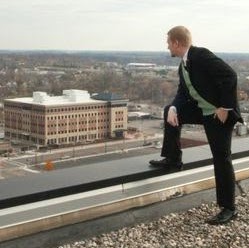
Thomas Darling
Work:
WHMI News - Reporter (2008)
Education:
Michigan State University - Journalism
About:
I'm a radio journalist working out of southeast Michigan and aiming for larger, more challenging markets.
Tagline:
Professional Innocent Bystander
Bragging Rights:
Michigan State University graduate, news nerd, science geek, snappy dresser
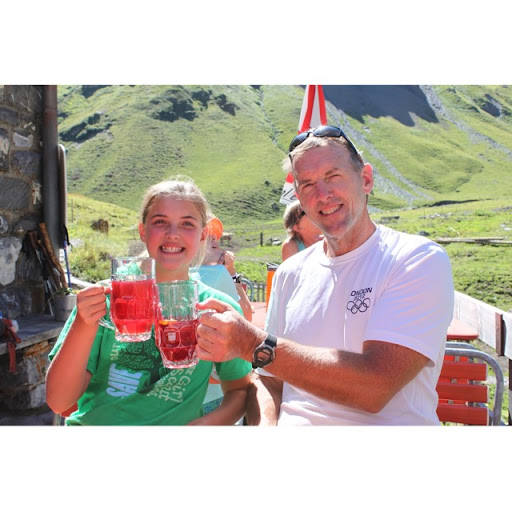
Thomas Darling
Work:
USRowing - Director of Para-Rowing

Thomas Darling
Education:
Penn

Thomas Darling
Tagline:
Find me on Facebook and LinkedIn instead...

Thomas Darling

Thomas Darling

Thomas Darling

Thomas Darling
Flickr
Plaxo

Thomas Darling
view sourceClassmates

Thomas Darling
view sourceSchools:
Emerson Elementary School Levittown PA 1958-1962
Community:
Wendy Guy, Caroline Petrie, Kimberly Hartman, Karen Brice

Thomas Darling
view sourceSchools:
Julia A. Stark Elementary School Stamford CT 1960-1967, Burdick Junior High School Stamford CT 1967-1970

Thomas Darling
view sourceSchools:
Schoolcraft Elementary School Waterford MI 1966-1973, Stevens T. Mason Junior High School Waterford MI 1974-1976
Community:
Susan Olsen, Matt Smith, Jennifer Galpin

Burdick Junior High Schoo...
view sourceGraduates:
Thomas Darling (1967-1970),
Gail Pearce (1972-1974),
Maria Evans (1972-1974),
Lauren Kahn (1958-1961),
Lisa Felle (1975-1977)
Gail Pearce (1972-1974),
Maria Evans (1972-1974),
Lauren Kahn (1958-1961),
Lisa Felle (1975-1977)

Schoolcraft Elementary Sc...
view sourceGraduates:
Thomas Darling (1966-1973),
Nina Kostecke (1995-1996),
Wade Wallace (1999-2003),
Sonya Broome (1977-1978),
Michelle North (1979-1985)
Nina Kostecke (1995-1996),
Wade Wallace (1999-2003),
Sonya Broome (1977-1978),
Michelle North (1979-1985)

Northeastern University -...
view sourceGraduates:
Jamie Mezzack (1981-1986),
James Saunders (1983-1988),
Thomas Darling (1970-1975)
James Saunders (1983-1988),
Thomas Darling (1970-1975)

Hamilton College, Clinton...
view sourceGraduates:
Tom Darling (1965-1970),
Dennis David (1994-1998),
William Jaffe (1966-1970),
Valerie Schmitt (1984-1988),
Raymond Stevenson (1993-1997)
Dennis David (1994-1998),
William Jaffe (1966-1970),
Valerie Schmitt (1984-1988),
Raymond Stevenson (1993-1997)
Youtube

Thomas Darling
view source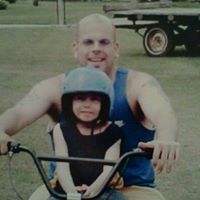
Thomas Darling II
view source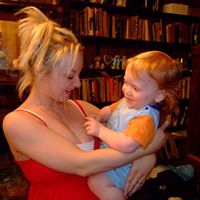
Thomas BabyGuy Darling
view source
Christopher Thomas Darling
view source
Thomas Darling
view source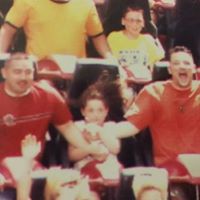
Thomas Darling
view source
Thomas F Darling
view source
Thomas Darling
view sourceGet Report for Thomas H Darling from Knoxville, TN, age ~54















![Darling - The M Song (Prins Thomas Edit) [ST016] Darling - The M Song (Prins Thomas Edit) [ST016]](https://i.ytimg.com/vi/FqnjXvsvB9o/hq720.jpg?sqp=-oaymwEcCNAFEJQDSFXyq4qpAw4IARUAAIhCGAFwAcABBg==&rs=AOn4CLDD8c4Nj9mQoF5PaAFrZn5S7vdb0A)


